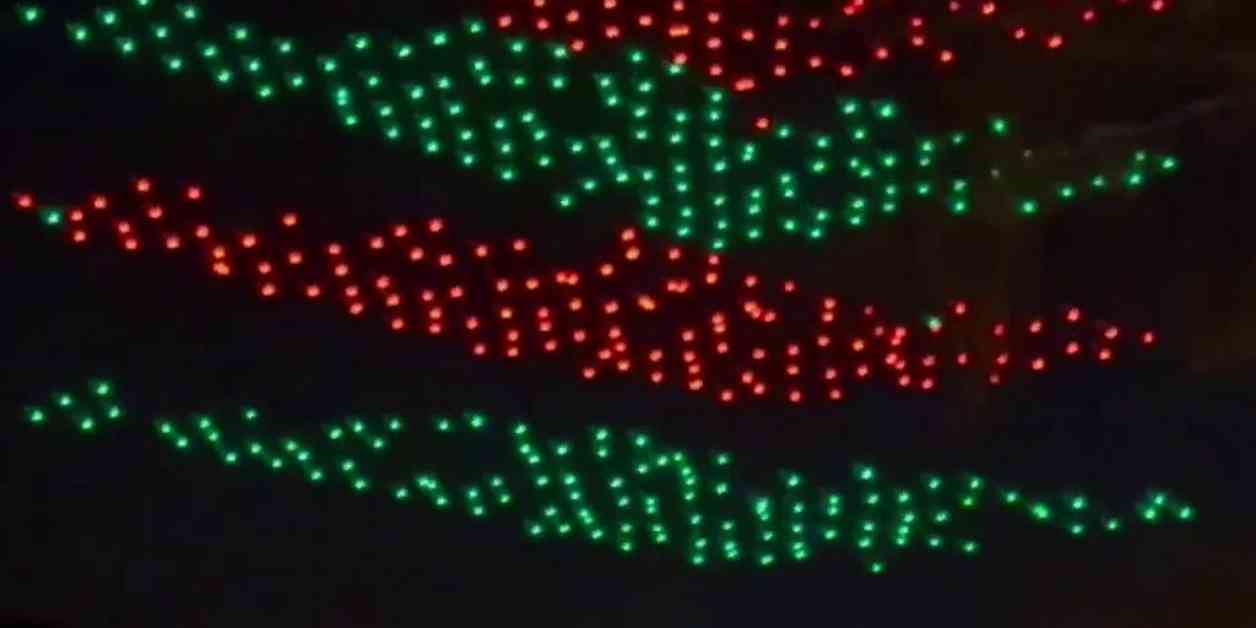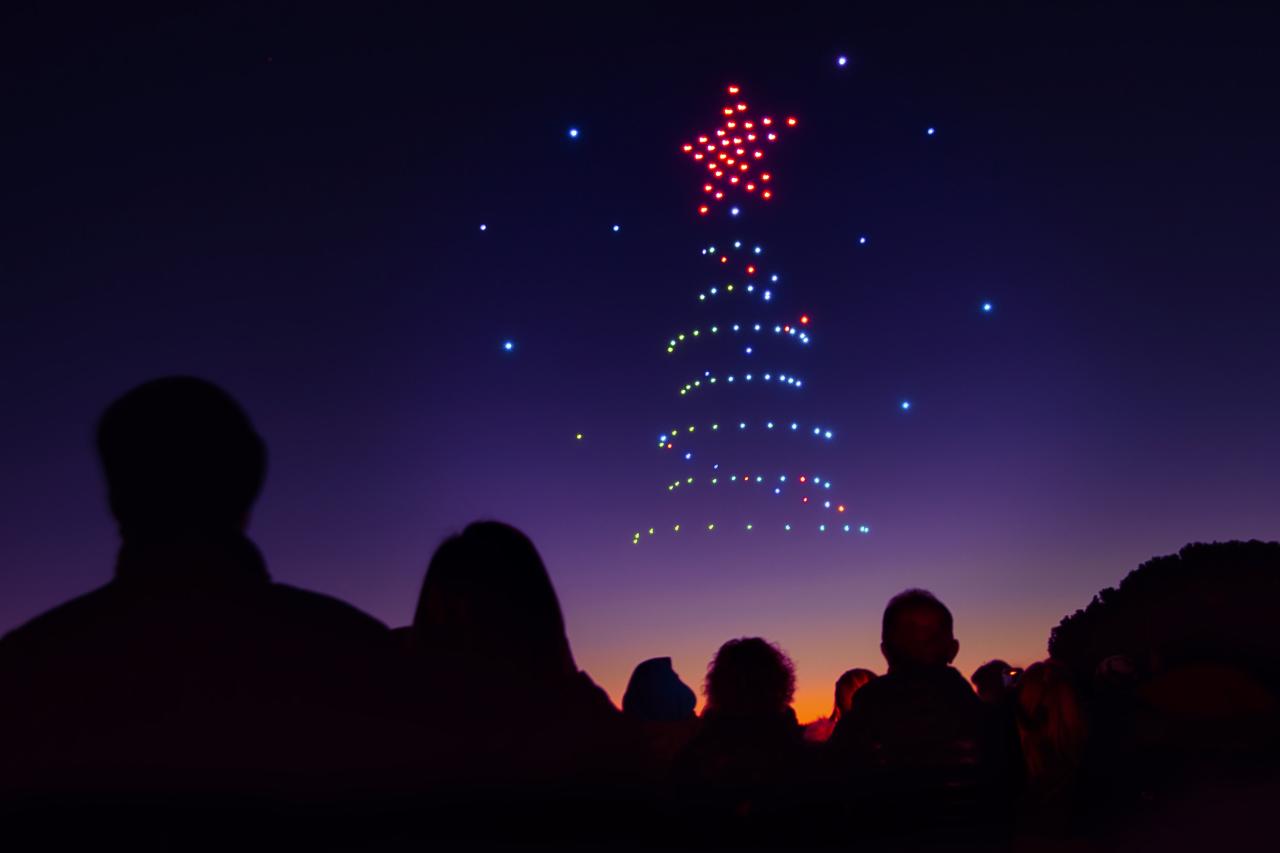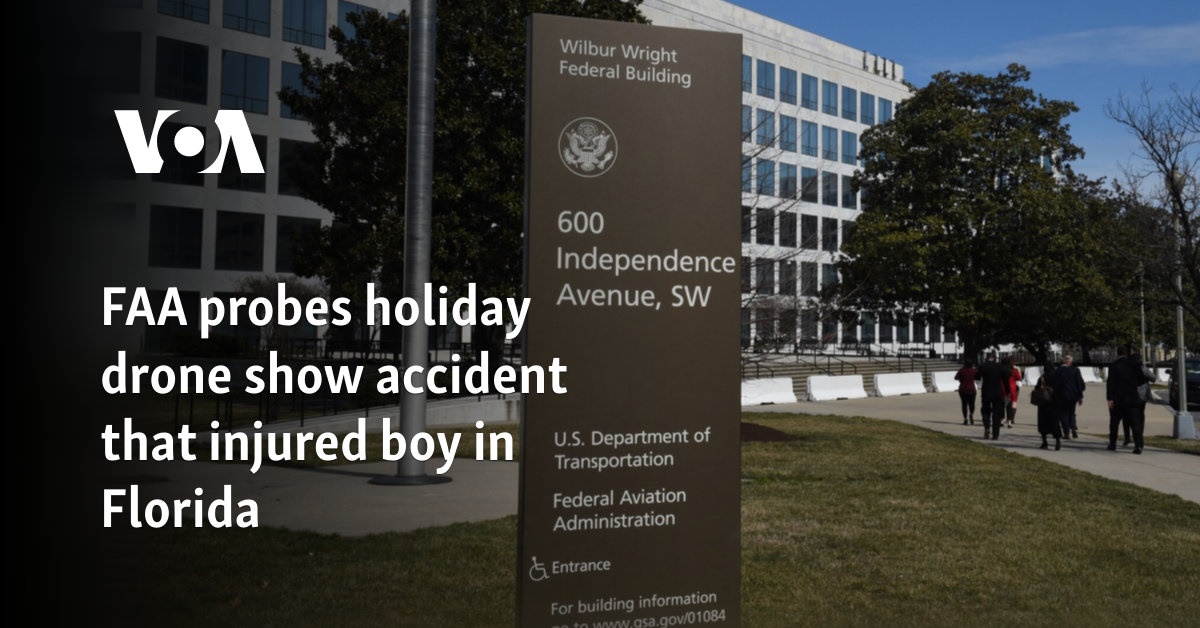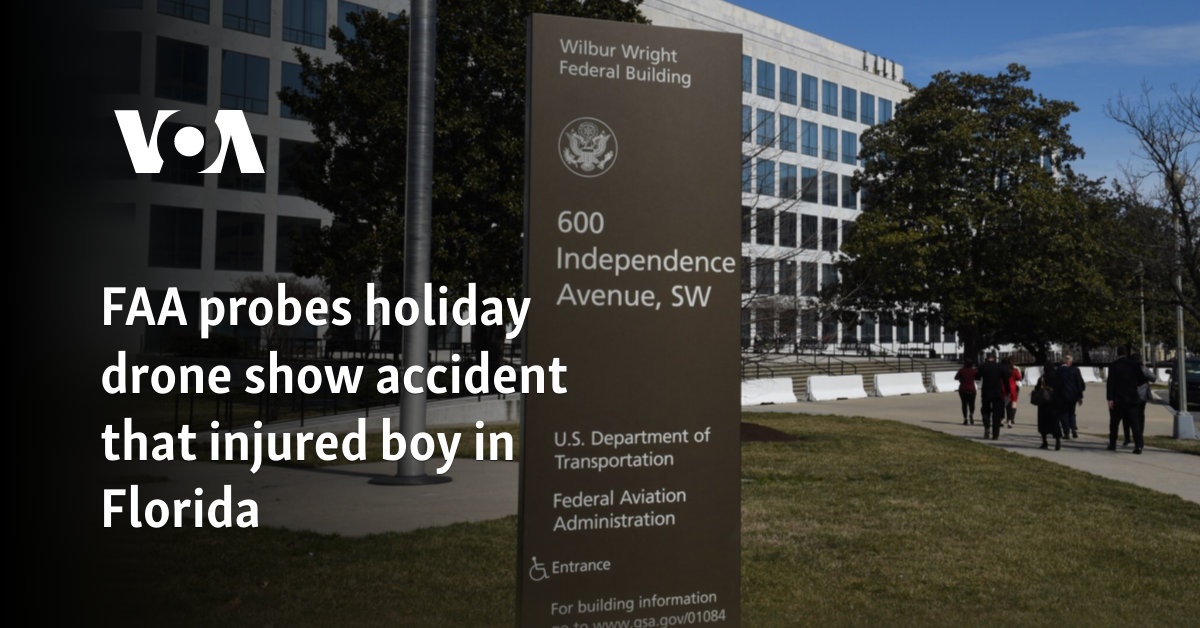Drone show accidents, while relatively rare, highlight the inherent risks associated with this increasingly popular form of entertainment. From technical malfunctions to human error, a multitude of factors can contribute to these incidents, resulting in significant consequences ranging from minor property damage to serious injury. This analysis delves into the various types of accidents, explores safety regulations and best practices, examines the impact and consequences, and investigates technological advancements aimed at mitigating future risks.
We will also examine case studies to understand the lessons learned and explore effective emergency response strategies.
Understanding the causes and consequences of drone show accidents is crucial for ensuring the safe and responsible operation of these spectacular displays. By analyzing past incidents, examining current safety protocols, and exploring technological advancements, we can strive towards a future where drone shows continue to captivate audiences without compromising safety.
Drone Show Accidents: A Comprehensive Analysis

The increasing popularity of drone shows has unfortunately been accompanied by a rise in accidents. These incidents, ranging from minor malfunctions to catastrophic failures, highlight the need for robust safety regulations, advanced technology, and well-trained operators. This analysis delves into the various aspects of drone show accidents, exploring their causes, consequences, and potential mitigation strategies.
Types of Drone Show Accidents
Drone show accidents can be broadly categorized into malfunctions, collisions, and human errors. Each category encompasses a range of specific incidents with varying degrees of severity and impact. The following table provides a detailed breakdown:
| Type of Accident | Description | Contributing Factors | Prevention Strategies |
|---|---|---|---|
| Malfunctions | Unexpected failures in drone components, including motors, batteries, GPS systems, or flight controllers. | Manufacturing defects, component wear and tear, extreme weather conditions, software glitches. | Regular maintenance, pre-flight checks, redundancy systems, use of high-quality components. |
| Collisions | Crashes involving two or more drones, or a drone colliding with an obstacle (e.g., buildings, trees, other objects). | Poor coordination, inadequate spacing between drones, GPS errors, loss of signal, lack of obstacle avoidance systems. | Advanced flight planning software, precise GPS coordination, effective communication systems, obstacle avoidance sensors. |
| Human Error | Mistakes made by the operators, including incorrect programming, poor decision-making, or inadequate training. | Lack of experience, insufficient training, inadequate risk assessment, poor communication among team members. | Comprehensive training programs, thorough pre-flight briefings, standardized operating procedures, emergency response plans. |
Drone failures can stem from various sources, including battery issues (leading to power loss mid-flight), motor malfunctions (causing loss of control), and GPS signal interference (resulting in inaccurate positioning and potential collisions). The consequences can range from minor damage to significant property damage, injuries, or even fatalities.
A software glitch can trigger a chain reaction leading to a drone show accident. The following flowchart illustrates a typical sequence of events:
(A detailed flowchart describing a software glitch leading to a drone malfunction, subsequent loss of control, and finally a collision would be inserted here. The flowchart would visually represent the sequence of events using boxes and arrows.)
Safety Regulations and Protocols
Various countries and regions have implemented safety regulations and protocols for drone shows, aiming to minimize accident risks. These guidelines often cover aspects such as licensing, registration, operational limits, and emergency procedures. Best practices implemented by successful drone show operators further enhance safety.
Drone show accidents, while rare, highlight the inherent complexities of coordinating numerous unmanned aerial vehicles. A recent incident that serves as a cautionary tale is the orlando drone show malfunction , where technical difficulties led to unexpected behavior. Understanding such malfunctions is crucial for improving safety protocols and preventing future drone show accidents.
- Obtaining necessary permits and licenses from relevant aviation authorities.
- Conducting thorough risk assessments before each show.
- Implementing redundant systems to mitigate the impact of single-point failures.
- Establishing clear communication protocols among operators and ground crew.
- Utilizing advanced flight planning and simulation software.
Best practices contribute significantly to accident prevention. The following table highlights some key examples:
| Practice | Description | Benefits | Potential Drawbacks |
|---|---|---|---|
| Redundant Systems | Using backup systems for critical components (e.g., multiple GPS receivers, backup power sources). | Increased reliability, reduced risk of complete system failure. | Increased cost and complexity. |
| Regular Maintenance | Performing routine checks and maintenance on all drones and equipment. | Early detection and prevention of potential malfunctions. | Requires dedicated time and resources. |
| Pilot Training | Providing comprehensive training to all drone operators. | Improved skills and knowledge, enhanced situational awareness. | Requires significant investment in training programs. |
Safety measures in large-scale shows are typically more stringent than those in smaller shows due to the increased number of drones and higher potential impact. Large-scale shows often involve more sophisticated flight planning, redundant systems, and a larger support team.
Impact and Consequences of Accidents

Drone show accidents can have far-reaching consequences, impacting the environment, legal landscape, and financial stability of involved parties. The potential consequences are significant and must be carefully considered.
Environmental damage can include harm to wildlife (birds, for instance, may be injured or killed by colliding drones) and property damage (drones crashing into buildings or vehicles). Legally, organizers and participants could face penalties ranging from fines to criminal charges depending on the severity of the accident and any resulting injuries or damages. Financially, accidents lead to repair costs, insurance claims, and potentially significant reputational damage, affecting future business prospects.
Technological Advancements for Mitigation

Technological advancements play a crucial role in preventing drone show accidents. Several technologies are designed to enhance safety and reliability.
| System | Description | Advantages | Disadvantages |
|---|---|---|---|
| GPS Systems | Provide precise location data, enabling accurate drone positioning and flight path planning. | Improved accuracy, reduced risk of collisions. | Susceptible to interference and signal loss. |
| Obstacle Avoidance Sensors | Detect obstacles and automatically adjust the drone’s flight path to avoid collisions. | Enhanced safety, reduced risk of unintended crashes. | Can be limited in range and effectiveness in complex environments. |
| Fail-safe Mechanisms | Implement automated safety measures to prevent or mitigate the consequences of malfunctions. Examples include automatic landing systems and emergency power-off functions. | Enhanced safety, protection against catastrophic failures. | Can add complexity and cost. |
Advanced communication systems, such as dedicated radio frequencies or mesh networks, improve coordination among drones and between operators and drones, reducing the risk of collisions.
Case Studies of Drone Show Accidents
Analyzing past accidents provides valuable insights into improving safety protocols and technological advancements. The following are brief descriptions of three hypothetical case studies (specific real-world examples would require extensive research and verification):
Case Study 1: Software Glitch
A software glitch in the central control system caused multiple drones to lose altitude simultaneously, resulting in several collisions and a significant number of damaged drones. The incident highlighted the need for robust software testing and redundancy in control systems.
Case Study 2: Battery Failure
A battery failure during a large-scale show caused one drone to fall from the sky, resulting in minor property damage. The incident underscored the importance of regular battery maintenance and the use of high-quality batteries.
Case Study 3: Human Error
A human error in programming led to a drone flying outside its designated airspace, causing a near-miss with an aircraft. This incident emphasized the importance of rigorous training for drone operators and the use of flight simulation software.
| Case Study | Cause | Consequences | Lessons Learned |
|---|---|---|---|
| Software Glitch | Software malfunction in the central control system. | Multiple drone collisions, significant damage. | Need for robust software testing and redundancy. |
| Battery Failure | Battery malfunction during flight. | Minor property damage. | Importance of regular battery maintenance and high-quality batteries. |
| Human Error | Programming error by the operator. | Near-miss with aircraft. | Importance of rigorous operator training and flight simulation. |
Emergency Response and Procedures, Drone show accident

A well-defined emergency response plan is critical for mitigating the consequences of drone show accidents. This plan should include clear communication protocols, evacuation procedures, and damage control strategies.
Drone show accidents, while rare, highlight the inherent risks in large-scale drone operations. Understanding these risks is crucial, and incidents like the one detailed in this report on a florida drone accident offer valuable insights into potential failure points. Analyzing such cases helps improve safety protocols and prevent future mishaps during drone shows, ensuring a safer and more enjoyable experience for spectators.
- Activate emergency communication channels.
- Initiate immediate drone shutdown procedures.
- Secure the affected area to prevent further incidents or injuries.
- Evaluate the extent of damage and injuries.
- Coordinate with emergency services (if necessary).
- Implement damage control and recovery procedures.
- Conduct a thorough post-incident investigation.
Effective communication during an accident is crucial for minimizing panic and ensuring public safety. Clear, concise messaging through various channels (e.g., public address systems, social media) helps keep spectators informed and calm.
The increasing popularity of drone shows necessitates a proactive approach to safety. While technological advancements offer promising solutions for mitigating risks, robust safety regulations, thorough operator training, and comprehensive emergency response plans remain critical. By learning from past accidents and embracing a culture of safety, we can ensure that drone shows continue to be a source of wonder and entertainment, without jeopardizing public safety or the environment.
Recent drone show accidents highlight the potential risks associated with large-scale drone operations. The increasing sophistication of drone technology, however, also raises concerns about malicious use, as evidenced by incidents like the kazan drone attack , which underscores the need for robust safety protocols and regulatory frameworks for all drone activities, particularly those involving numerous unmanned aerial vehicles.
Therefore, improved safety measures are crucial to prevent future drone show mishaps.
FAQ Resource: Drone Show Accident
What is the average cost of insurance for a drone show?
Insurance costs vary significantly based on factors such as the scale of the show, the number of drones, the location, and the insurer. It’s best to obtain quotes from multiple insurers.
What are the typical penalties for violating drone show safety regulations?
Penalties vary by jurisdiction but can include fines, license suspension or revocation, and even criminal charges in cases of serious negligence or recklessness.
How can I report a drone show accident?
Report the accident to the relevant aviation authority in your region. This often involves contacting local police or emergency services initially, followed by a formal report to the governing body overseeing drone operations.
What kind of training is required for drone show operators?
Training requirements vary, but typically include both theoretical knowledge of drone operation and practical flight experience. Advanced training in safety protocols and emergency procedures is also crucial.
